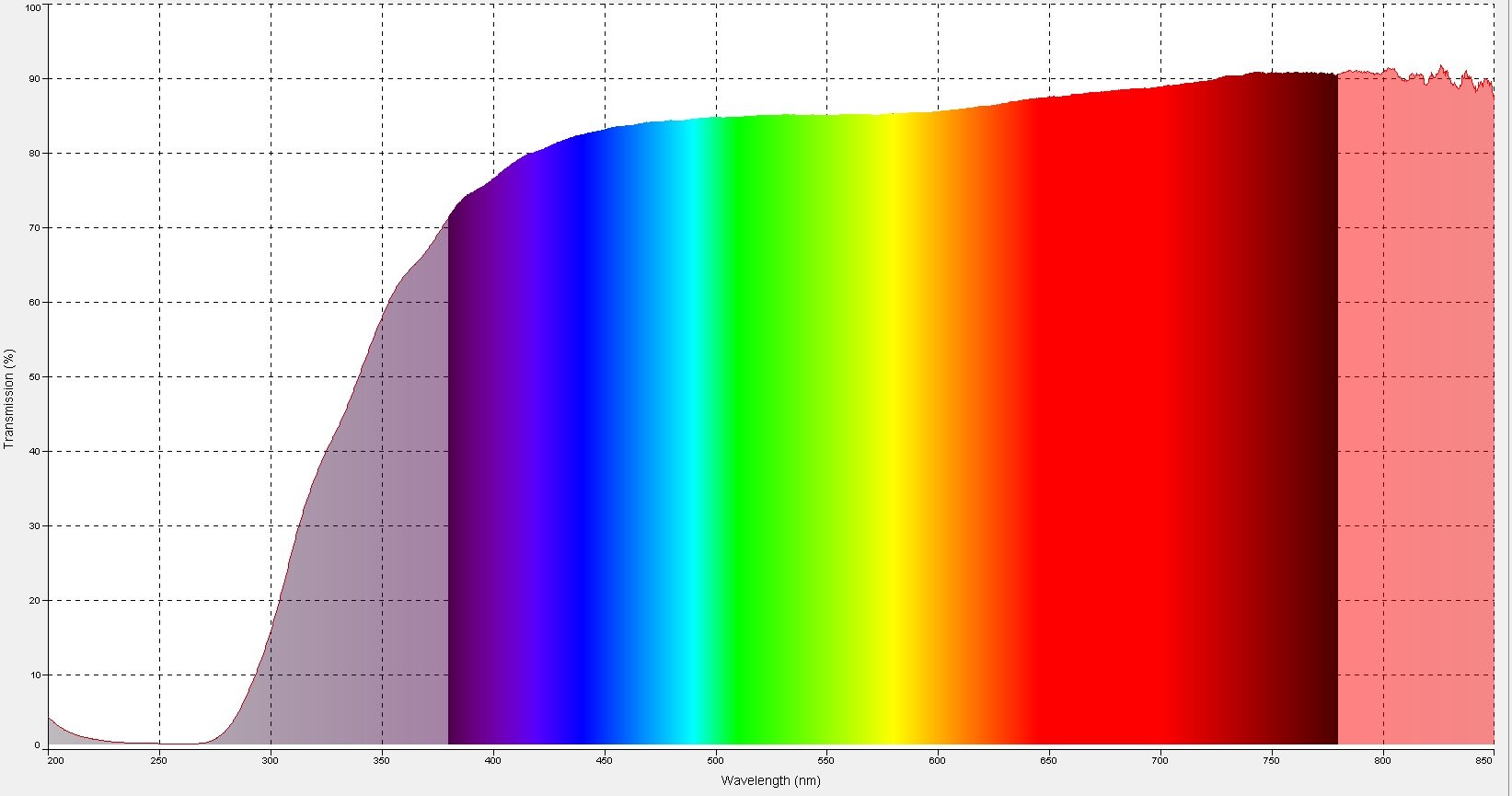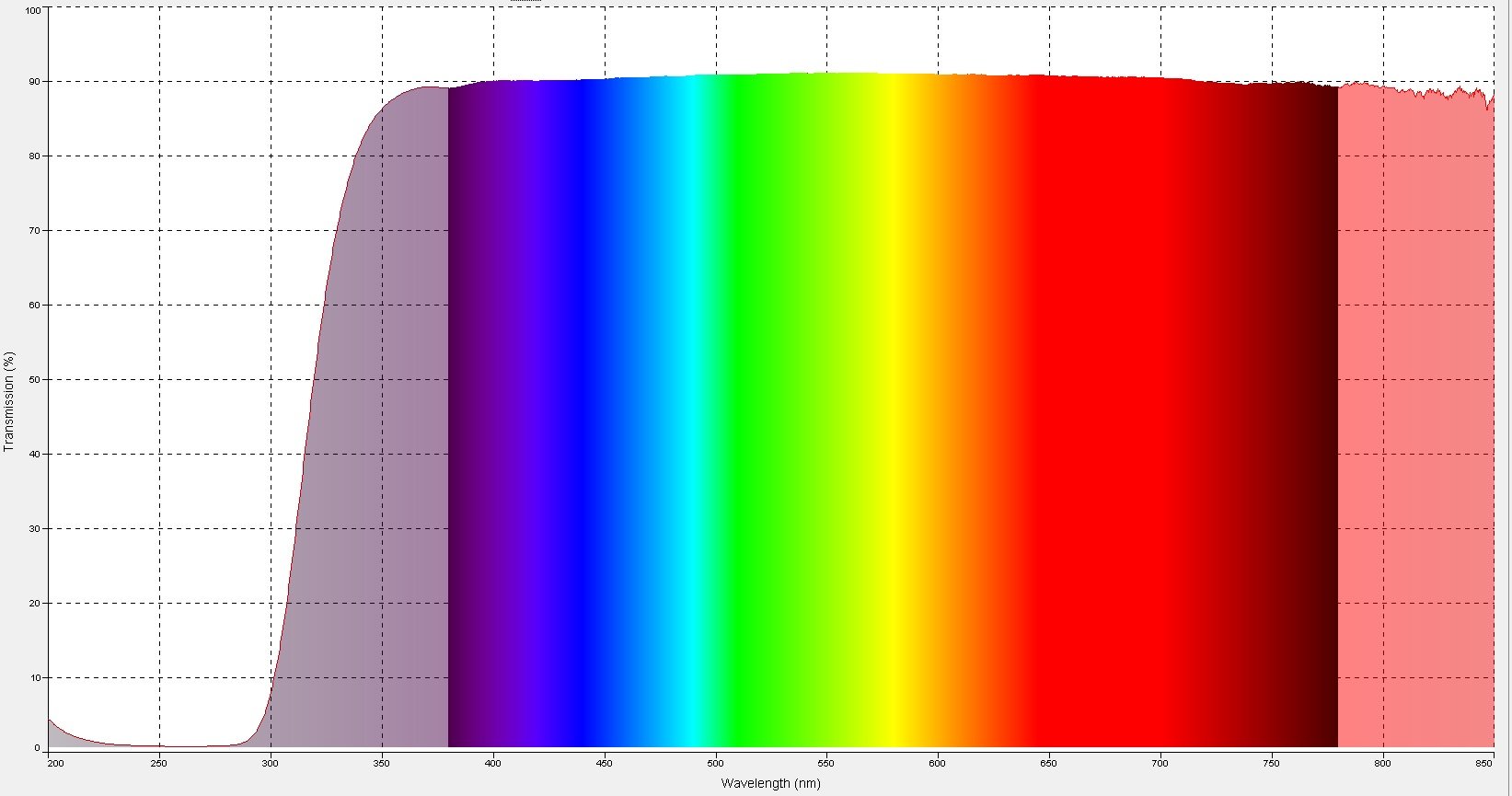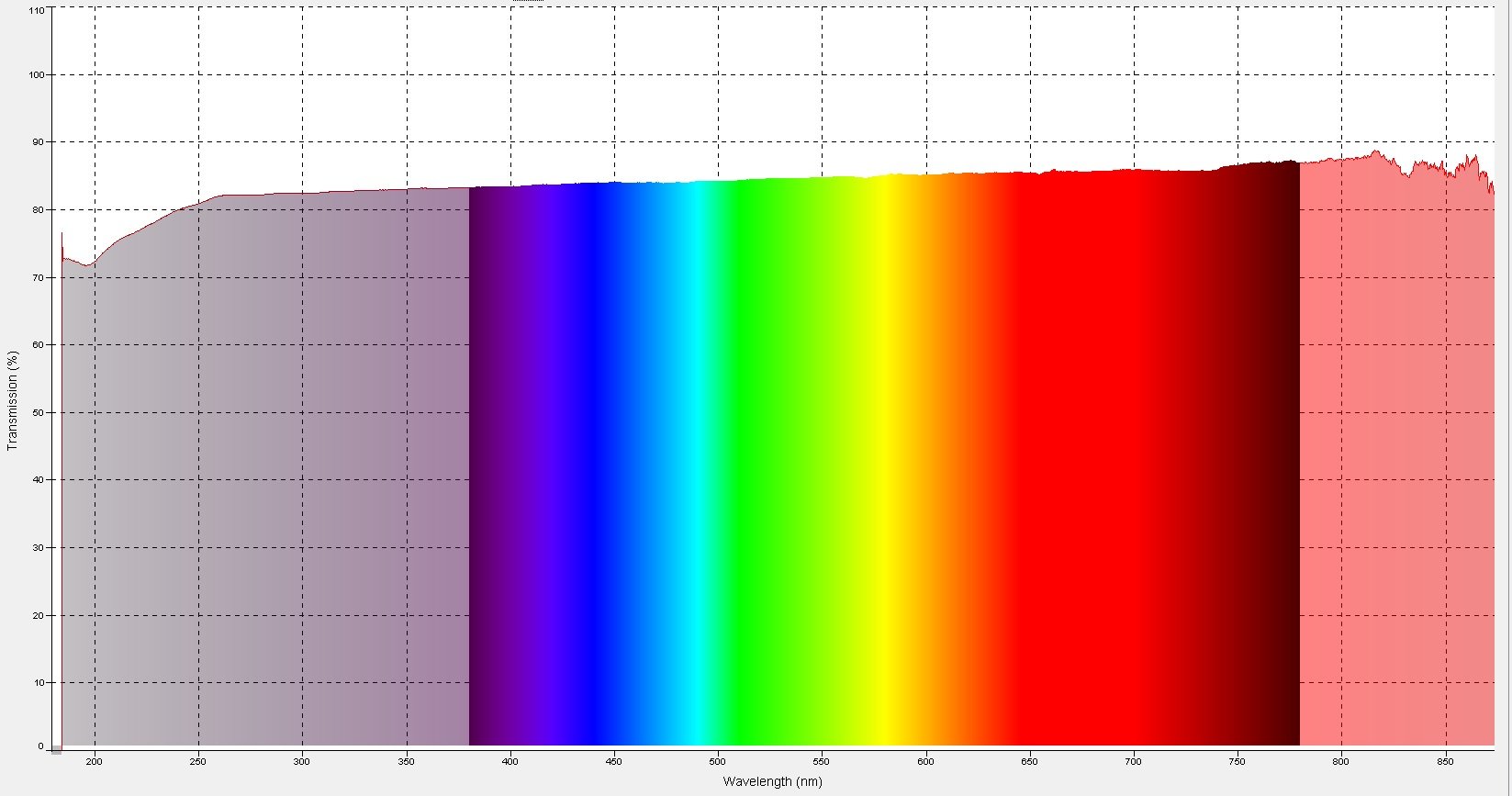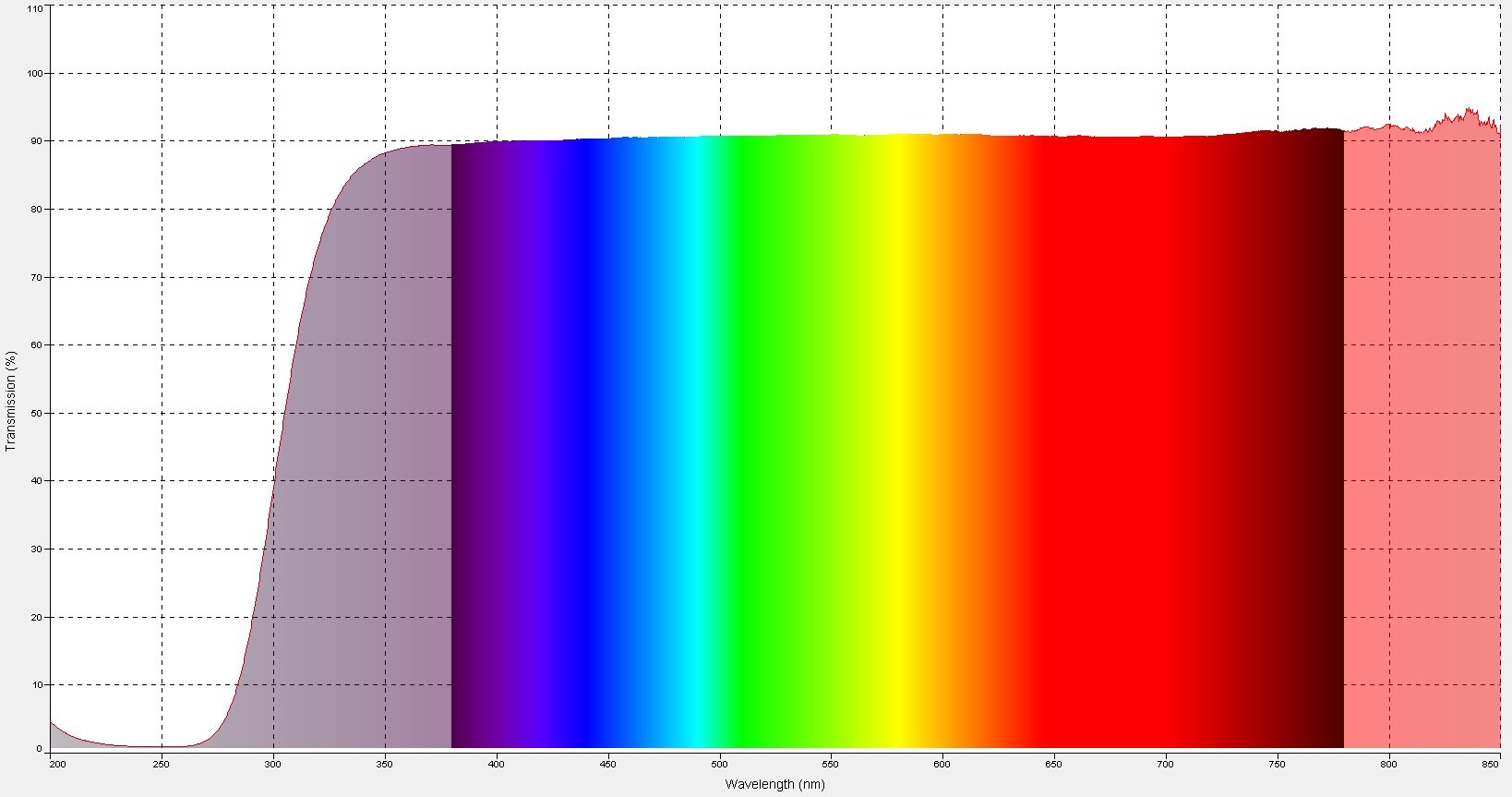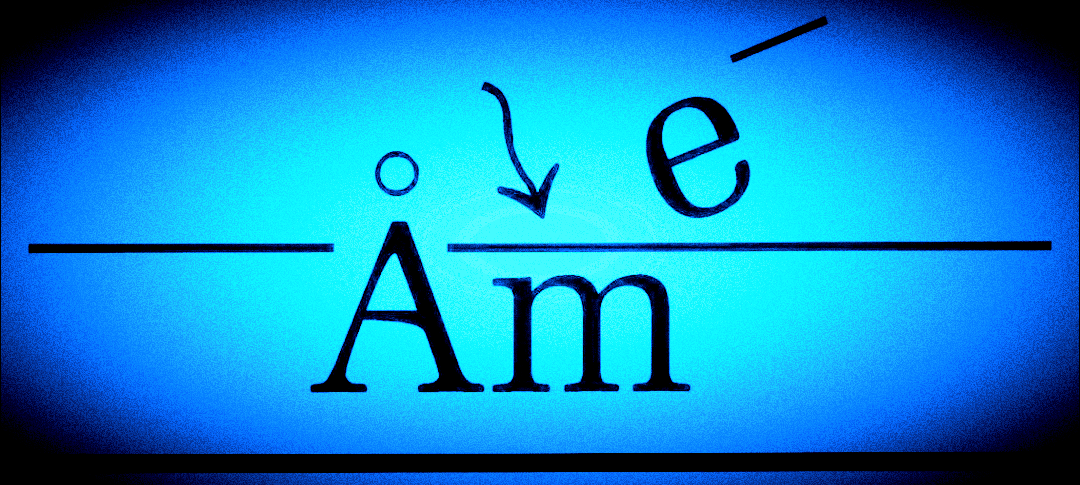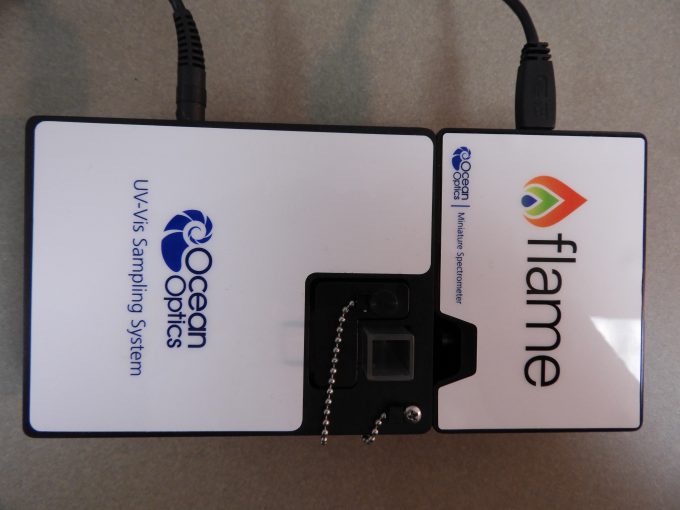
Ultraviolet-Visible Light Spectrophotometry and its Capabilities
- Commonly called UV-Vis Spectroscopy or ultraviolet-visible light spectroscopy
- Determines the absorption of ultraviolet and visible light in solutions in transmission mode
- Determines the reflectance of a material specularly at normal incidence and diffuse at either 45 degrees or into an integrating sphere
- Used to measure the concentration of colored or UV-absorbing ingredients in solution
- A chemical may be added to the solution that creates a chromofore when that molecule reacts with the chemical or ion that one wishes to detect and whose concentration is to be measured, allowing the detection and concentration measurement of species which do not absorb light otherwise
- Absorbance is governed by the Beer-Lambert Law
- Quantification is achieved by comparing the spectrum of the unknown concentration to spectra for known, prepared concentrations of the species of interest
- In cases in which the species producing the absorbance is not known, it may have to discovered by other means
- Absorbance spectra lend themselves to quality control testing
- Reflectance measurements, both specular and non-specular, can be used to fingerprint products for scientific protection against fraudulent products and intellectual property theft
- Color measurement by wavelength of absorption or reflectance
UV-Vis Spectroscopy System
- Ocean Optics Inc. FLAME-CHEM-UV-VIS
- 180 – 850 nm wavelength
- SONY ILX511B linear silicon CCD array detector
- 25 µm entrance slit
- 1.5 nm (FWHM) optical resolution
- 250:1 signal-to-noise ratio
- 1300:1 dynamic range for a single acquisition
- 1 ms to 65 s integration time
- <0.10% stray light at 435 nm
- Deuterium UV light source
- Tungsten halogen visible light source
- 1 cm standard path-length cuvettes
- Can use optical filters
- Normal and 45-degree reflectance measurements
- 30mm integrating sphere detector for diffuse reflectance measurements
- External halogen light source for reflectance measurements
Applications
- Measuring lead, copper, iron, cadmium, mercury, and other metal ion concentrations in water
- Detecting the change in antifreeze or windshield washing fluid compositions due to use or the passage of time
- Quality control of beverages such as sodas, wines, beers, whiskies, and liqueurs
- Characterizing the change in motor oils with use
- Detecting soluble surface contamination removed from a surface by a solvent
- Detecting and measuring organic contaminants in a solvent
- Measuring the transmission of a liquid at a particular wavelength between 200 and 850 nm
- Measuring the transmission of UV-Visible-Near Infrared light through transparent or translucent materials such as glasses, polymers, sapphire, lithium niobate, diamond, cubic zirconia, quartz, many gem stones
- Can measure the index of refraction at a wavelength of a thin film on a substrate
- Measure the degree to which a polymer film, coating, or package reduced the UV transmission in applications in which the film, coating, or package is to provide UV degradation protection, including USP <671> requirement for less than 10% transmission from 290 nm to 450 nm.
- Determine the UV transmission of eyeglasses, goggles, and welding masks.
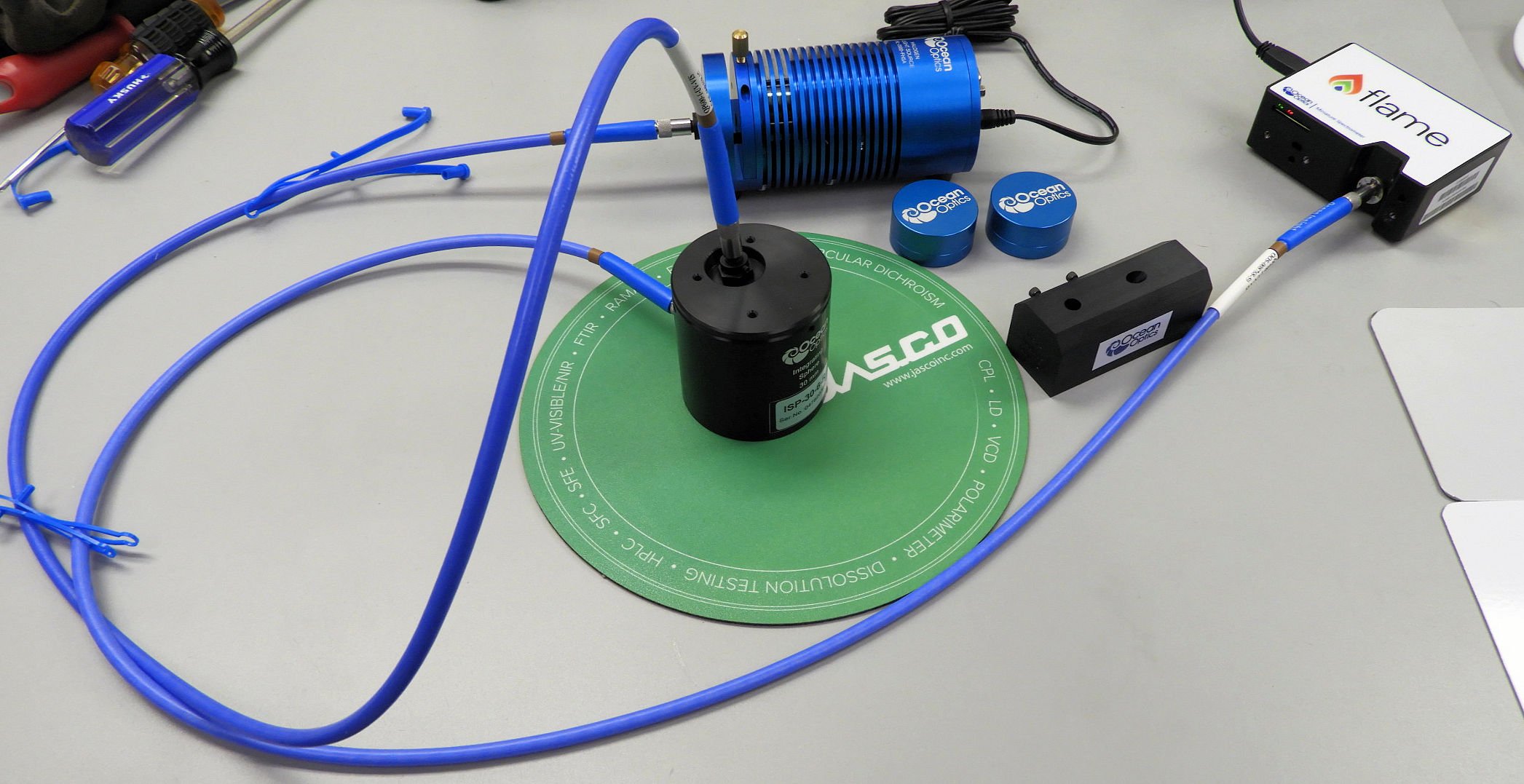
Contact: Griffin Spence, Ph.D., e-mail: Griffin@andersonmaterials.com or ContactUs@andersonmaterials.com
The Transmittance of Transparent Solid Materials for UV, Visible, and Very Near Infrared Light
Examples of the transmission of light radiation through some glass, plastic, lithium niobate, and sapphire samples are shown. The transmission is measured as a percentage versus the wavelength over the range from 200 to 850 nm.
